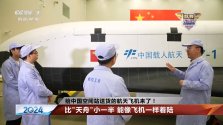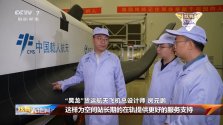You are using an out of date browser. It may not display this or other websites correctly.
You should upgrade or use an alternative browser.
You should upgrade or use an alternative browser.
China's Space Program Thread II
- Thread starter Blitzo
- Start date
antiterror13
Brigadier
I think the main benefit is market access and also technological control over Brazil.
Indonesia maybe a better option
by78
General
A convenient overview of China's lunar exploration programs from an published recently:
– Launch Chang'e-7 in 2026, composed of a lunar orbiter, lander, rover, and a small flying probe to explore the resources of the lunar South Pole.
– Launch Chang'e-8 in 2028 to test in-situ resource utilization and 3D-printing construction technology to prepare for manned lunar exploration.
– The first manned lunar landing in 2029-2030, using two Long March 10 launches to send two astronauts to the lunar surface.
– Build an international lunar scientific research station from 2035 to 2045, establishing a long-term base on the Moon to conduct scientific research and technology verification.


A few slides on the upcoming Chang'e-8 mission (planned for 2028). One of the rovers appears to have a humanoid robot mounted on top, not sure if that's actually the case. Of further interest, some 200kg of payload capacity is reserved for equipment from international partners, the selection process for which is almost finished. It's expected that some 10 foreign partners will be chosen. Finally, the lander now features a crane for deploying the rovers and other equipment such as seismometer onto the lunar surface. The crane eliminates the need for separate deployment mechanisms for these payloads.



Last edited:
by78
General
A static model of YF-102V at Zhuhai Airshow.
A static model of the YF-209 80-ton LOX/Methane engine.
Better images of YF-102V and YF-209 static models.



Is there any particular reason for that robot being on top?A few slides on the upcoming Chang'e-8 mission (planned for 2028). One of the rovers appears to have a humanoid robot mounted on top. Of further interest, some 200kg of payload capacity is reserved for equipment from international partners, the selection process for which is almost finished. It's expected that some 10 foreign partners will be chosen.



by78
General
Scaled models of the fully re-usable Long March 9 at Zhuhai Airshow + 1st stage capture tower.




One more images of the capture tower + CGI images of the recovery barge.



by78
General
Is there any particular reason for that robot being on top?
Not sure if that's actually a humanoid robot, even if the resemblance is there.




















